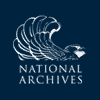Cabinet Meeting. Opinion on the Depredations of the Creek Indians Upon the State of Georgia, 29 May 1793
Cabinet Meeting. Opinion on the Depredations
of the Creek Indians Upon the State of Georgia
[Philadelphia] May 29th 1793
The President of the United States having assembled the heads of the respective departments and the attorney General, laid before them for their advice thereon, sundry communications from the Governor of Georgia, and others, relatively to the recent alarming depredations of the creek Indians upon the state of Georgia.12
Whereupon after the subject was maturely considered and discussed it was unanimously advised
That the Governor of Georgia be informed that13 from considerations relative to foreign powers, and the pending treaty with the Northern Indians,14 it is deemed adviseable for the present, to avoid offensive expeditions into the Indian Country. But from the nature of the late appearances, it is thought expedient to encrease the force to be kept up for defensive purposes. The President therefore authorises, the calling into, and keeping in service, in addition to the troops heretofore stationed in Georgia, one hundred horse, and one hundred infantry, to be employed in repelling inroads as circumstances shall require. As it does not yet appear that the whole nation of the creeks, is engaged in hostility, it is confided that this force will be sufficient for the object designated. The case of a serious invasion of the territory of Georgia, by large bodies of Indians must be referred to the provisions of the constitution. The proceeding with efficacy in future requires absolutely, that no unnecessary expence should be incurred in the mean time.
The above corps of horse to be raised for any period of time not exceeding twelve Months as may be found most practicable, subject to be dismissed at any time sooner as the government may think fit. The infantry to be called into service according to the course of the militia Laws endevoring to secure their continuance in service for the like time.
That General Pickens15 be invited to repair to the seat of Government, for the purpose of information and consultation; a proper compensation for his expences, and loss of time to be allowed.
That a further supply of one thousand arms with correspondent accoutrements be forwarded to the state of Georgia. Arms and accoutrements, for the cavalry to be also provided and forwarded.
That an Agent be sent to the Creeks to endevor to adjust the surrender of those Indians who have lately committed murders on the citizens of Georgia; to conciliate, and secure such of the Indians as may be well disposed to the United States, in the event of a war with the Creek nation, and if possible to prevent that extremety.16
Th: Jefferson
H Knox
Edm: Randolph
Alexander Hamilton
DS, George Washington Papers, Library of Congress.
1. These treaties are printed in C. J. Kappler, ed., Indian Affairs: Laws and Treaties (Washington, 1904), II, 19–25.
2. , Indian Affairs, I, 368–69.
3. , Indian Affairs, I, 369.
4. , Indian Affairs, 305–07, 411–12, 417.
5. , IV, 221.
6. , IV, 257.
7. See “Notes on Thomas Jefferson’s Report of Instructions for the Commissioners to Spain,” March 1–4, 1792.
8. , Foreign Relations, I, 259.
9. , Foreign Relations, I, 263–64.
10. Translation, in the handwriting of Jefferson, Thomas Jefferson Papers, Library of Congress.
11. , Foreign Relations, I, 265–67.
12. On May 25, 1793, Knox sent to the President several letters which had recently arrived from Georgia indicating the hostile temper of the Creeks. Two days later Knox submitted to Washington letters from South Carolina providing further evidence of the warlike intentions of the tribe (, 128–29). Washington then called a meeting of the cabinet on May 28 to “take into consideration certain communications relative to the state of our affairs with the Southern Indians.” H, who “was detained in the Country,” did not attend. As no decision was reached at this meeting, the cabinet reassembled on the following day (, 133).
13. Knox wrote to Telfair on May 30, 1793, informing him of the President’s decision concerning military operations against the Creeks. The letter follows closely the opinions expressed by the cabinet at this meeting (LS, letterpress copy, George Washington Papers, Library of Congress).
14. See “Conversation with George Hammond,” November 22, December 15–28, 1792, February 24–March 7, 1793; H to Hammond, December 29, 1792; “Draft of Instructions for William Hull,” January 14, 1793; Hull to H, February 6, 1793; Washington to H, February 17, 1793; Washington to H, Jefferson, Knox, and Randolph, February 24, 1793, March 21–22, 1793; “Cabinet Meeting. Opinion Respecting the Proposed Treaty with the Indians Northwest of the Ohio,” February 25, 1793.
15. Andrew Pickens, who was a brigadier general in the South Carolina militia during the American Revolution and a member of the South Carolina legislature after the war, had on several occasions served as representative of the Confederation government in negotiations with the southern Indians. In 1793 Pickens was elected to Congress.
16. Washington recommended that Marinus Willett of New York be appointed as agent. As Willett could not undertake the mission because of a broken leg, James Seagrove, an experienced Indian agent, was instructed to offer peace terms to the Creeks.

![University of Virginia Press [link will open in a new window] University of Virginia Press](/lib/media/rotunda-white-on-blue.png)
